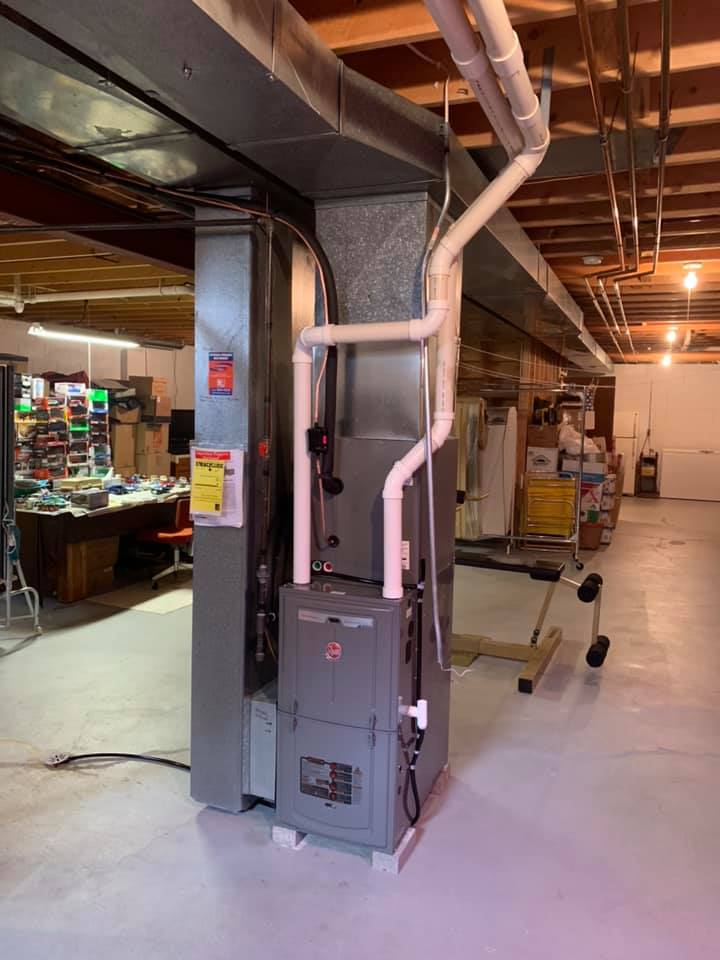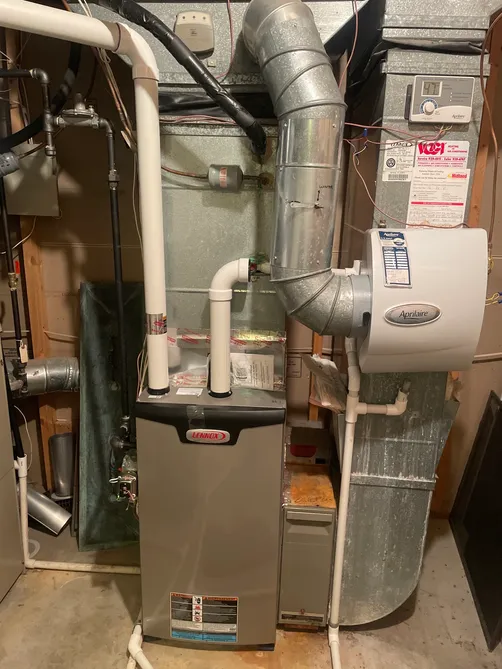HVAC Portland: Reliable heating, ventilation, and air conditioning services
HVAC Portland: Reliable heating, ventilation, and air conditioning services
Blog Article
The Ultimate Overview to Furnace Setup for a Cozy Home
Furnace installment is an essential aspect of keeping a comfy home atmosphere, especially throughout the colder months. Comprehending the numerous sorts of heaters available and the importance of picking the proper size can greatly influence both effectiveness and convenience degrees. A thorough setup procedure, enhanced by the right devices and materials, makes sure optimum performance. This guide intends to gear up property owners with the understanding required to make educated choices and carry out effective maintenance practices. As you consider these variables, the question remains: what steps can you require to guarantee your heating system offers you well for several years ahead?
Kinds Of Furnaces
When thinking about furnace installment, comprehending the different types of furnaces offered is important for making an educated choice. The key sorts of heating systems include gas, electrical, and oil heaters, each offering distinct benefits and considerations.
Gas heaters are one of the most typical selection as a result of their effectiveness and lower operational costs. They utilize all-natural gas or lp, supplying quick home heating and consistent efficiency, making them perfect for colder climates.
Electric heating systems, while usually simpler to install and preserve, tend to have higher functional expenses. They are often preferred in areas where gas solution is inaccessible or for homes with existing electric infrastructure.
Oil heating systems, though much less usual today, continue to be a viable choice in particular areas. They burn heating oil, which can be advantageous throughout chillier months, but their dependence on oil distribution poses prospective difficulties.
Furthermore, there are high-efficiency models readily available throughout these kinds, which can dramatically lower power consumption and utility costs. Ultimately, comprehending these furnace types will certainly help home owners choose a system that aligns with their heating needs, budget, and energy preferences.
Selecting the Right Size
Picking the ideal size for a furnace is critical to ensuring optimal efficiency and energy efficiency. A small furnace will certainly struggle to keep comfortable temperature levels throughout the cold months, resulting in enhanced wear and tear, greater power expenses, and prospective system failing. Conversely, an extra-large furnace may cycle on and off also frequently, leading to inefficient home heating and irregular temperature circulation within the home.

Heating system sizes are normally measured in British Thermal Units (BTUs), which suggest the quantity of energy called for to warm a room. It is recommended to talk to a certified heating and cooling expert who can perform the needed computations and suggest an appropriately sized system. furnace repair. Investing in the best furnace size not only enhances convenience however likewise adds to long-lasting power financial savings and system dependability
Installation Process Overview
When the appropriate heating system size has been determined, the next step entails understanding the setup process. This process typically starts with a thorough analysis of the installation website, including the existing ductwork and air flow systems. Proper planning is important to make sure seamless assimilation and optimum performance of the brand-new furnace.
The setup typically includes news detaching the old device, which includes safely eliminating any electric links, gas lines, and ductwork affixed to the previous furnace - furnace repair. When gotten rid of, the brand-new heater is meticulously positioned and leveled, ensuring that it meets the supplier's specs for ideal operation
Next, the installer will certainly connect the essential gas and electrical lines, sticking to regional codes and security laws. Following this, ductwork might require to be changed or replaced to accommodate the brand-new system, making sure effective airflow throughout the home.

Crucial Tools and Materials
Gathering the important tools and products is crucial for a successful heater installment. Correct prep work makes certain that the installation process is reliable and minimizes the potential for errors.
Key devices called for consist of a drill, screwdrivers, wrenches, pliers, and a level. A multimeter is essential for electric connections, while a pipe cutter and adjustable wrench are required for gas line installation. Additionally, a tape measure and a stud finder will certainly assist in making certain precise positioning and protected fastening of the heater.
In regards to materials, you will certainly need ductwork, insulation, and sealing tape to make certain optimal air flow and energy effectiveness. It is additionally vital to have a brand-new furnace filter available, along with venting materials, such as PVC pipe or steel flue, depending upon the kind of furnace being installed.
Security equipment, consisting of handwear covers, safety glasses, and a face mask, is also vital to protect against dust and debris throughout installation. Having all these tools and materials conveniently offered not only enhances the procedure yet likewise improves the safety and security and effectiveness of the furnace setup.
Upkeep Tips for Long Life
To ensure the long life of your heating system, it is important to carry out a routine maintenance timetable that attends to vital elements of the system. Begin by changing or cleansing the air filter every one to 3 months, as a clogged up filter can limit airflow and decrease effectiveness. Additionally, evaluate and clean up the blower assembly to avoid dust build-up that can prevent efficiency.
Next, examine the thermostat setups and alter if required to ensure accurate temperature level law. Check the ductwork for leaks or obstructions, as this can result in energy loss and unequal home heating. Routinely lube the electric motor and bearings according websites to the producer's suggestions to minimize wear and tear.
Expert inspections must occur each year, where a certified technician can analyze the furnace's general condition, check for gas leakages, and ensure that security attributes are operating correctly. Ultimately, consider setting up a programmable next page thermostat to enhance power use and preserve constant home temperatures. By adopting these upkeep methods, you can improve your heater's effectiveness, expand its life-span, and eventually enjoy a cozy and comfortable home environment.
Final Thought
Effective heating system setup is essential for achieving ideal home convenience and energy effectiveness. Recognizing various heater kinds and picking the appropriate dimension makes certain correct capability (furnace repair). A careful installation process, sustained by the right devices and materials, adds substantially to the system's performance. In addition, routine upkeep plays a crucial function in prolonging the life expectancy of the heating system. Abiding by these guidelines fosters a warm and welcoming living room, necessary for withstanding the obstacles of chillier months.
Report this page